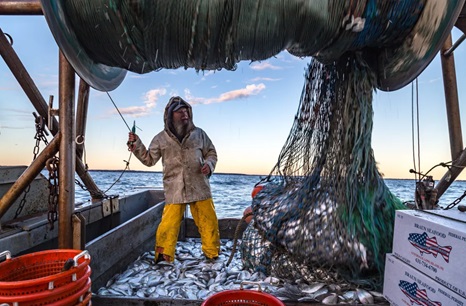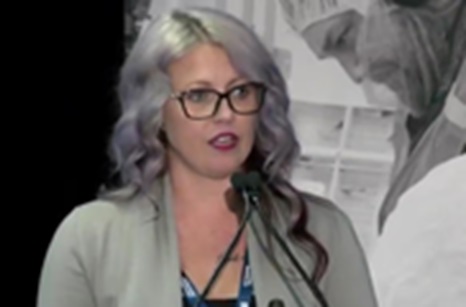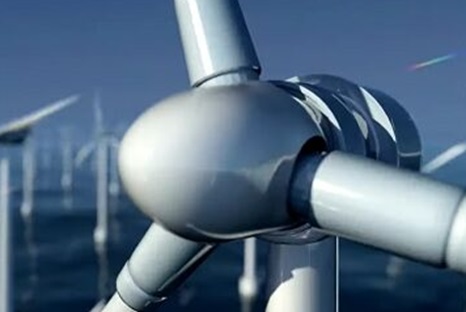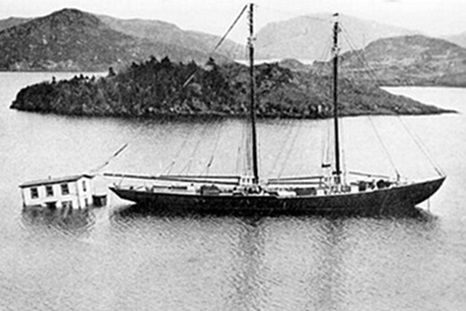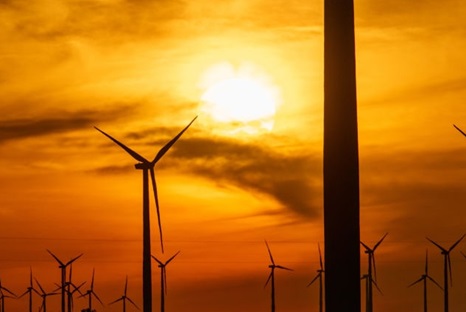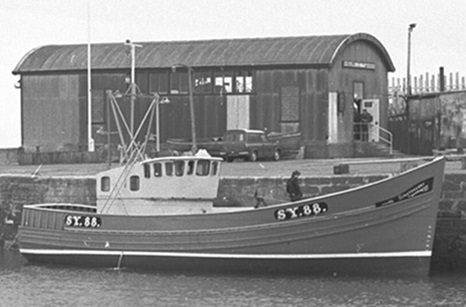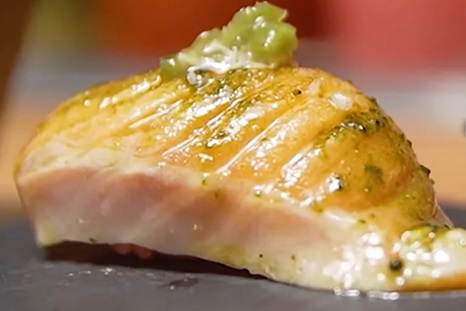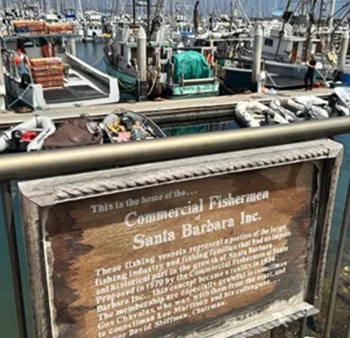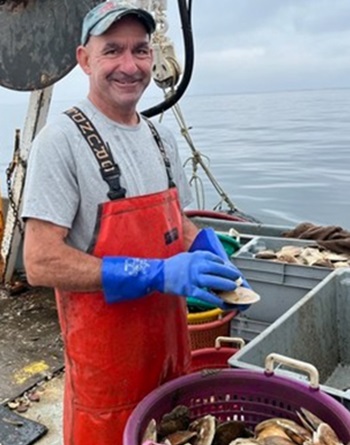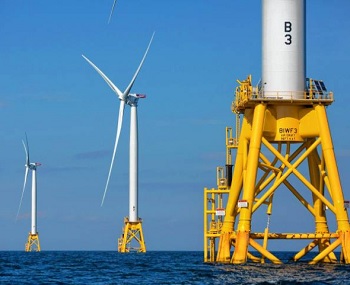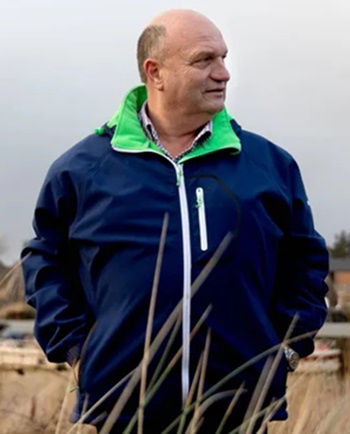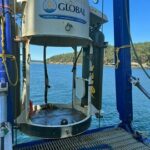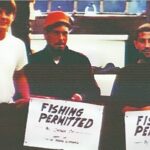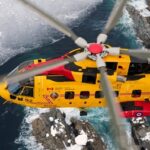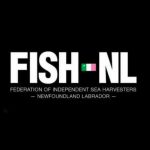County residents butt heads with harbor commissioners over offshore wind
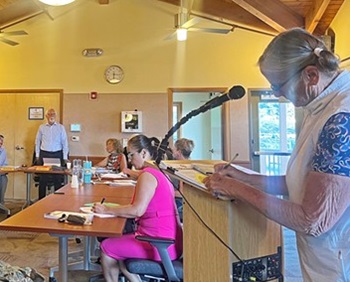 Unhappy residents accused Port San Luis Harbor District commissioners of being untruthful about their connections to offshore wind companies during a chaotic, heated Aug. 27 meeting. “I would like clarification on why several days before your last meeting [July 23] why Clean Energy Terminals had on their website that you were partners, in partnership, and that you had come to an agreement,” REACT Alliance President Mandy Davis asked during public comment. “It was there on their website and to refer to someone as a partner is very, very specific.” Davis’ comment comes a month after commissioners voted 3-2, with Commissioners Mary Matakovich and Jim Blecha dissenting, to collaborate with Clean Energy Terminals (CET) on studies focused on whether Port San Luis can be a potential site to support offshore wind development. more, >>CLICK TO READ<< 09:42
Unhappy residents accused Port San Luis Harbor District commissioners of being untruthful about their connections to offshore wind companies during a chaotic, heated Aug. 27 meeting. “I would like clarification on why several days before your last meeting [July 23] why Clean Energy Terminals had on their website that you were partners, in partnership, and that you had come to an agreement,” REACT Alliance President Mandy Davis asked during public comment. “It was there on their website and to refer to someone as a partner is very, very specific.” Davis’ comment comes a month after commissioners voted 3-2, with Commissioners Mary Matakovich and Jim Blecha dissenting, to collaborate with Clean Energy Terminals (CET) on studies focused on whether Port San Luis can be a potential site to support offshore wind development. more, >>CLICK TO READ<< 09:42
Do these Georgia waterways support “significant” commercial activity? A federal agency says no
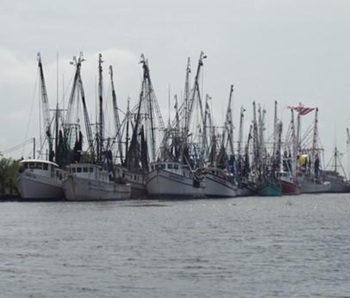 The U.S. Army Corps of Engineers says the agency hasn’t dredged nine Georgia waterways in decades – and there hasn’t been much impact as a result. So they’re considering asking Congress to de-authorize them from federal maintenance. But Georgia seafood harvesters and others say that’s not true. They argue that there’s plenty of commercial activity on Georgia’s smaller coastal waterways to justify keeping them authorized for future dredging. Charlie Phillips of Townsend, in northern McIntosh County, owns two seafood harvesting businesses, Phillips Seafood and Sapelo Sea Farms. “It’s going to need to be dredged sooner or later,” he said, noting that some areas on the Sapelo River already are troublesome for some boats at low tide. more, >>CLICK TO READ<< 08:41
The U.S. Army Corps of Engineers says the agency hasn’t dredged nine Georgia waterways in decades – and there hasn’t been much impact as a result. So they’re considering asking Congress to de-authorize them from federal maintenance. But Georgia seafood harvesters and others say that’s not true. They argue that there’s plenty of commercial activity on Georgia’s smaller coastal waterways to justify keeping them authorized for future dredging. Charlie Phillips of Townsend, in northern McIntosh County, owns two seafood harvesting businesses, Phillips Seafood and Sapelo Sea Farms. “It’s going to need to be dredged sooner or later,” he said, noting that some areas on the Sapelo River already are troublesome for some boats at low tide. more, >>CLICK TO READ<< 08:41
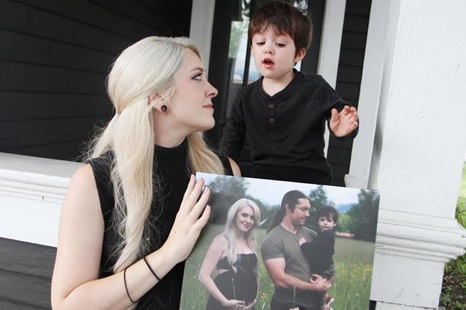
Everson man falls overboard commercial boat, dies
In the early hours of Saturday, Aug. 24, Cheyenne Hoy gave birth to her baby girl, Fiona Rose. Tragically, her husband Clayton was not able to be with his family. Hoy, a commercial fisherman, went missing on July 25 after he fell overboard his boat near Egegik, Alaska. On Aug. 12, he was confirmed dead. Cheyenne Hoy said Clayton “was our everything and sole provider for our family.” “He truly loved fishing and learned everything from his father,” Cheyenne said. Through his father, Guy Hoy, Clayton became a commercial salmon fisherman. Since age 15, he crewed with his father, then became his own captain. Cheyenne explained that 2024 was Clayton’s third year with his own boat and he “was already one of the top boats in the bay.” more, >>CLICK TO READ<< 07:12
Commercial fisherman Clayton Hoy, who went missing July 25 after a fall overboard near Egegik, was confirmed dead on August 12. Clayton Hoy, a 36-year-old from Washington, fell overboard from a commercial fishing boat, the F/V Warmaster. more, >>CLICK TO READ<< 18:14
Shetland MSP Raises Concerns Over Non-UK Fishing Vessels in Scottish Waters
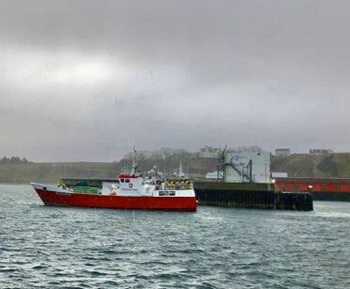 Beatrice Wishart, MSP for the Shetland Islands and member of the Scottish Liberal Democrats, has raised a series of questions in the Scottish Parliament regarding the monitoring and licensing of non-UK registered fishing vessels operating in Scottish waters. Wishart’s first question sought clarity on the number of non-UK registered vessels licensed to fish in Scottish waters. Gougeon responded by stating that the licensing of these vessels is managed by the UK Government’s Department for Environment, Food and Rural Affairs (DEFRA). As of August 12, 2024, there were 1,549 EU vessels, 213 Norwegian vessels, and 26 Faroese vessels with access licenses to fish in UK waters. This substantial number of foreign vessels highlights the significant presence of non-UK fleets in Scottish waters, raising questions about the impact on local fisheries and the effectiveness of monitoring and regulation. more, >>CLICK TO READ<< 06:21
Beatrice Wishart, MSP for the Shetland Islands and member of the Scottish Liberal Democrats, has raised a series of questions in the Scottish Parliament regarding the monitoring and licensing of non-UK registered fishing vessels operating in Scottish waters. Wishart’s first question sought clarity on the number of non-UK registered vessels licensed to fish in Scottish waters. Gougeon responded by stating that the licensing of these vessels is managed by the UK Government’s Department for Environment, Food and Rural Affairs (DEFRA). As of August 12, 2024, there were 1,549 EU vessels, 213 Norwegian vessels, and 26 Faroese vessels with access licenses to fish in UK waters. This substantial number of foreign vessels highlights the significant presence of non-UK fleets in Scottish waters, raising questions about the impact on local fisheries and the effectiveness of monitoring and regulation. more, >>CLICK TO READ<< 06:21
Deltaville’s Miller named captain of 2024 Urbanna Oyster Festival
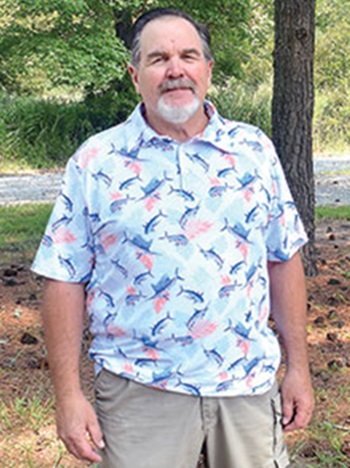 Urbanna Oyster Festival Foundation (UOFF) first began naming captains of the festival in 1988 as a way of honoring people who are either a part of the area’s oyster heritage or who have played a role in enhancing and preserving that heritage and culture. Bryan Miller comes from a long line of boatbuilders and oystermen. His paternal grandfather, the late B.U. Miller, was an oysterman/boatbuilder in the Locust Hill area and his maternal grandfather Lee Deagle was owner of Deagle and Son Marine Railway on Fishing Bay in Deltaville. All of the boatbuilders mentioned were wooden boatbuilders and built from “rack of eye” without construction plans. “My Dad (Virgil Miller) was one of the first here in Deltaville to build boats off plans and to build in steel,” he said. “When they started offshore lobstering in New England, fisherman Harry Hunt came to my father and asked him to build him a boat. Dad had (naval architect) Harry Bulifant draw the plans and he built off those plans. “When Virgil retired, Bryan picked up on that business and built several New England lobster boats and trawlers. One of his most famous clients was Bob Brown, made famous in the book and movie “Perfect Storm.” Brown owned the vessel, F/V Andrea Gail, that was lost at sea along with six crew members during that 1991 “nor’easter” storm. more, >>CLICK TO READ<< 20:27
Urbanna Oyster Festival Foundation (UOFF) first began naming captains of the festival in 1988 as a way of honoring people who are either a part of the area’s oyster heritage or who have played a role in enhancing and preserving that heritage and culture. Bryan Miller comes from a long line of boatbuilders and oystermen. His paternal grandfather, the late B.U. Miller, was an oysterman/boatbuilder in the Locust Hill area and his maternal grandfather Lee Deagle was owner of Deagle and Son Marine Railway on Fishing Bay in Deltaville. All of the boatbuilders mentioned were wooden boatbuilders and built from “rack of eye” without construction plans. “My Dad (Virgil Miller) was one of the first here in Deltaville to build boats off plans and to build in steel,” he said. “When they started offshore lobstering in New England, fisherman Harry Hunt came to my father and asked him to build him a boat. Dad had (naval architect) Harry Bulifant draw the plans and he built off those plans. “When Virgil retired, Bryan picked up on that business and built several New England lobster boats and trawlers. One of his most famous clients was Bob Brown, made famous in the book and movie “Perfect Storm.” Brown owned the vessel, F/V Andrea Gail, that was lost at sea along with six crew members during that 1991 “nor’easter” storm. more, >>CLICK TO READ<< 20:27
Maine’s mysterious floating wind research
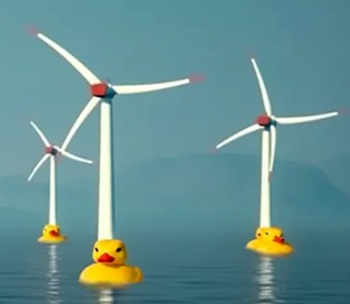 The State of Maine just got a very strange offshore wind lease from the Feds. They call it a research lease as opposed to a commercial development lease. It has some mysterious features that are worth pondering. There may even be a many billion-dollar trick here. We consider that at the end, after briefly explaining the mysteries. To begin with, the lease is for a 144 MW “research array” of turbines, as it is called. Well, 144 MW is huge for research. The South Fork Wind site (fixed, not floating) that is already running is a 12-turbine, 132 MW commercial facility, so this array will be bigger than commercial. It could cost $3 billion-plus the cost of the factory to make the dozen or so floaters. Different websites suggest different turbine sizes from 10 to 12 MW. Of course, if this is really research, they might use a variety of sizes, but the total is still huge. more, >>CLICK TO READ<< 12:14
The State of Maine just got a very strange offshore wind lease from the Feds. They call it a research lease as opposed to a commercial development lease. It has some mysterious features that are worth pondering. There may even be a many billion-dollar trick here. We consider that at the end, after briefly explaining the mysteries. To begin with, the lease is for a 144 MW “research array” of turbines, as it is called. Well, 144 MW is huge for research. The South Fork Wind site (fixed, not floating) that is already running is a 12-turbine, 132 MW commercial facility, so this array will be bigger than commercial. It could cost $3 billion-plus the cost of the factory to make the dozen or so floaters. Different websites suggest different turbine sizes from 10 to 12 MW. Of course, if this is really research, they might use a variety of sizes, but the total is still huge. more, >>CLICK TO READ<< 12:14
New NOAA opinion: Wind farm pile driving causing “temporary disturbance” causing “temporary disturbance”
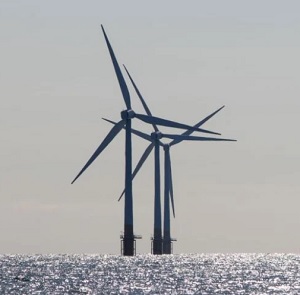 The federal government has issued a new “biological opinion” on Vineyard Wind’s offshore energy project 14 miles southwest of Nantucket, finding that pile-driving noise associated its construction is likely to adversely affect, but not likely jeopardize, the continued existence of whales, fish and sea turtles listed under the Endangered Species Act. “It will have no effect on any designated critical habitat,” National Oceanic and Atmospheric Administration Fisheries said in a statement. “NOAA Fisheries does not anticipate serious injuries to or mortalities of any Endangered Species Act listed whale including the North Atlantic right whale.” more, >>CLICK TO READ<< 09:01
The federal government has issued a new “biological opinion” on Vineyard Wind’s offshore energy project 14 miles southwest of Nantucket, finding that pile-driving noise associated its construction is likely to adversely affect, but not likely jeopardize, the continued existence of whales, fish and sea turtles listed under the Endangered Species Act. “It will have no effect on any designated critical habitat,” National Oceanic and Atmospheric Administration Fisheries said in a statement. “NOAA Fisheries does not anticipate serious injuries to or mortalities of any Endangered Species Act listed whale including the North Atlantic right whale.” more, >>CLICK TO READ<< 09:01
VA Advised to Take Controversial Winter Dredge Crab Season off the Table Until 2026
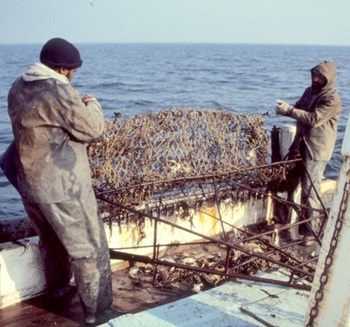 Earlier this summer, Virginia fishery managers voted to repeal a 16-year ban on winter dredging for blue crabs, opening the door to possibly allow watermen to dredge the Bay bottom, scooping semi-dormant crabs from their winter slumber. But a state advisory committee now recommends Virginia take a step back from that possibility. The committee’s new advice could put the brakes on those earlier moves to reopen the dredge fishery that’s been closed since 2008.Virginia Watermen’s Association President J. C. Hudgins spoke in favor of the dredge fishery. Hudgins says that if there were 20 or so boats working in the fishery with three men to a boat it would provide winter jobs for 50 to 60 men. “There is still a winter market for crab meat in local picking houses,” he says.” At the last meeting, we also talked about wanting a year-round crab fishery in Virginia with potting, dredging and other gear types.” more, >>CLICK TO READ<< 07:59
Earlier this summer, Virginia fishery managers voted to repeal a 16-year ban on winter dredging for blue crabs, opening the door to possibly allow watermen to dredge the Bay bottom, scooping semi-dormant crabs from their winter slumber. But a state advisory committee now recommends Virginia take a step back from that possibility. The committee’s new advice could put the brakes on those earlier moves to reopen the dredge fishery that’s been closed since 2008.Virginia Watermen’s Association President J. C. Hudgins spoke in favor of the dredge fishery. Hudgins says that if there were 20 or so boats working in the fishery with three men to a boat it would provide winter jobs for 50 to 60 men. “There is still a winter market for crab meat in local picking houses,” he says.” At the last meeting, we also talked about wanting a year-round crab fishery in Virginia with potting, dredging and other gear types.” more, >>CLICK TO READ<< 07:59
Athearn Marine Agency Boat of the Week: 44’x17′ Novi Lobster, Gillnetter, Scalloper
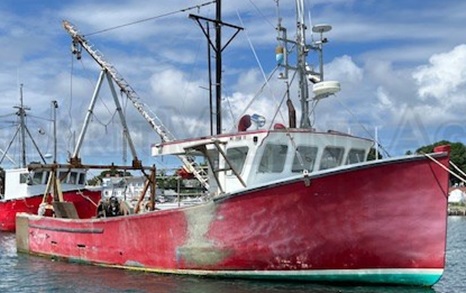 To review specifications, information, and 25 photos’, >click here< To see all the boats in this series, >click here< 06:25
To review specifications, information, and 25 photos’, >click here< To see all the boats in this series, >click here< 06:25
Wind Power: Broken Blades and (Maybe) Green Gouging
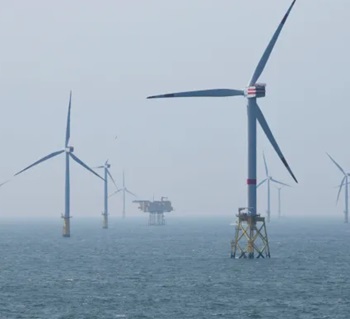 Say what you will about wind turbines, the steampunk wing of our glorious renewable future, their most dramatic failures have an epic quality about them — the toppling, the crumpling, the buckling, the bits and pieces flying through the air. The owner-operators of the two farms — Equinor for Empire and Orsted for Sunrise — are two of the top five global wind-farm investors and operators. They presumably know what they are doing, have access to attractively priced capital, good supply chains, and so on. In the last week, there has been a lot of talk from Democrats about greedflation, a convenient myth. They might want to turn their attention to greenflation, which is not, and indeed to any evidence of “gouging,” another of their supposed concerns, in this area. more, >>CLICK TO READ<< 08:28
Say what you will about wind turbines, the steampunk wing of our glorious renewable future, their most dramatic failures have an epic quality about them — the toppling, the crumpling, the buckling, the bits and pieces flying through the air. The owner-operators of the two farms — Equinor for Empire and Orsted for Sunrise — are two of the top five global wind-farm investors and operators. They presumably know what they are doing, have access to attractively priced capital, good supply chains, and so on. In the last week, there has been a lot of talk from Democrats about greedflation, a convenient myth. They might want to turn their attention to greenflation, which is not, and indeed to any evidence of “gouging,” another of their supposed concerns, in this area. more, >>CLICK TO READ<< 08:28
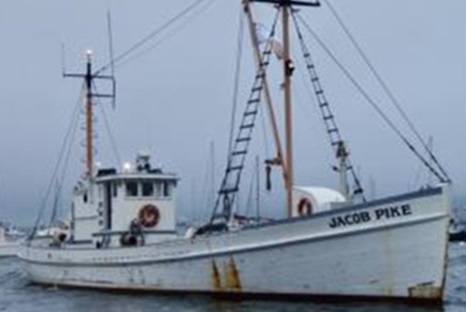
Effort builds to save historic legacy of sardine carrier ‘Jacob Pike’
At one stretch in Maine’s maritime history, the sardine was as mighty as the lobster, a fishery that employed thousands along the coast. Sardine canneries were a common sight beside busy harbors, and carriers plied the Gulf of Maine, especially in the warmer months. Thomaston was in the thick of the industry, a boatbuilding hub for sturdy fishing vessels that included the Jacob Pike. “The sardine industry back in the days was a big deal, rivaling what lobsters are today,” said Rockport Marine owner Taylor Allen, who himself spent several years restoring and then relaunching in 2020 the William Underwood, a sardine carrier built in 1941. “A lot of real estate along the coast was bought up by captains back in the day.” The Jacob Pike, built in 1949 at the Newbert and Wallace yard in Thomaston, was in the thick of it all from launching day. Photos, more, >>CLICK TO READ<< 06:41
Newly reinstated Newfoundland cod fishery temporarily paused as landings hit limit
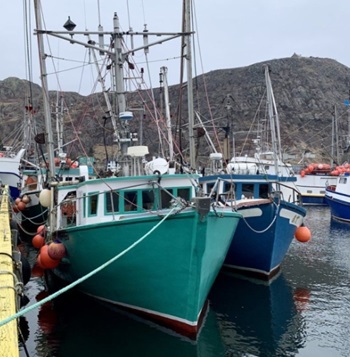 The federal government has temporarily paused parts of the newly reinstated commercial northern cod fishery off the east coast of Newfoundland as landings approach the seasonal limit. Fisheries and Oceans Canada says that as of Monday evening, fishers from the east coast of the island cannot fish cod until Sept. 15, when the second half of the season is set to begin. The first half of the season was set to end on Sept. 14, but officials say fishers have almost caught the maximum amount of fish allowed during that period. Labrador fishers will be confined to the region’s southeast coast until Sept. 15. more, >>CLICK TO READ<< 17:23
The federal government has temporarily paused parts of the newly reinstated commercial northern cod fishery off the east coast of Newfoundland as landings approach the seasonal limit. Fisheries and Oceans Canada says that as of Monday evening, fishers from the east coast of the island cannot fish cod until Sept. 15, when the second half of the season is set to begin. The first half of the season was set to end on Sept. 14, but officials say fishers have almost caught the maximum amount of fish allowed during that period. Labrador fishers will be confined to the region’s southeast coast until Sept. 15. more, >>CLICK TO READ<< 17:23
Organized crime linked to illegal lobster fishing ‘terrorizing the community,’ N.S. minister claims
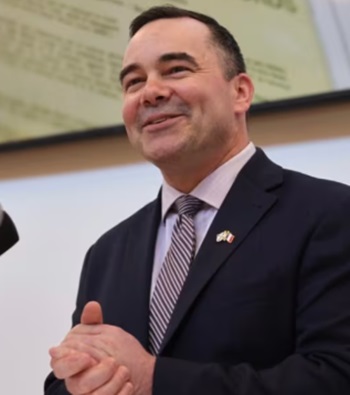 Nova Scotia’s fisheries minister says the federal failure to stop what he calls illegal out-of-season fishing in some of the most lucrative lobster grounds in the country has fuelled organized crime that is “terrorizing the community” along a stretch of the province’s southwest. Kent Smith made the comments in a letter last week to his federal counterpart, Fisheries Minister Diane Lebouthillier, in which he claims the illegal fishery has “entrenched itself” in the region of Clare and surrounding areas. “This is not related to Indigenous harvesting,” Smith said. “This is illegal lobster fishing that is causing havoc on the ground down there, causing havoc in the community and causing a lot of fear and anxiety in Clare and Meteghan.” more, >>CLICK TO READ<< 15:50
Nova Scotia’s fisheries minister says the federal failure to stop what he calls illegal out-of-season fishing in some of the most lucrative lobster grounds in the country has fuelled organized crime that is “terrorizing the community” along a stretch of the province’s southwest. Kent Smith made the comments in a letter last week to his federal counterpart, Fisheries Minister Diane Lebouthillier, in which he claims the illegal fishery has “entrenched itself” in the region of Clare and surrounding areas. “This is not related to Indigenous harvesting,” Smith said. “This is illegal lobster fishing that is causing havoc on the ground down there, causing havoc in the community and causing a lot of fear and anxiety in Clare and Meteghan.” more, >>CLICK TO READ<< 15:50
Overall impact of disastrous pink salmon fishery still being calculated
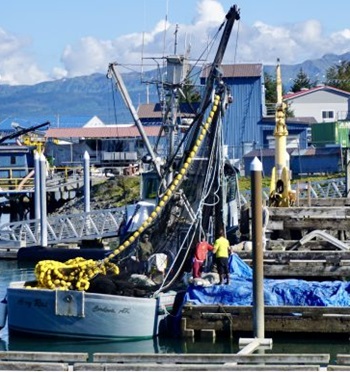 Fallout from what’s being described by commercial fishermen as a pink salmon disaster in Prince William Sound is still being calculated, but troubling times began earlier this year when high insurance costs kept some from ever going out in their boats. Low runs of humpies, mounting fuel costs and some processors opening up late all appear to be spelling big economic challenges for the Prince William Sound economy. “It’s going to be a big hit for the town,” said Cordova City Council Member Kristen Carpenter, who is anticipating a significant loss of raw fish tax dollars to the city this year. “It was an absolute disaster,” said veteran salmon harvester John Renner, chair of the Alaska Department of Fish and Game’s Copper River/Prince William Sound Advisory Committee. One young man lost his boat, said Renner. “Anyone who has payments to make is in trouble unless they have dual permits and are making money off of gillnetting or longlining,” he said. “Fuel is $5 a gallon and insurance costs are up 25%.” more, >>CLICK TO READ<< 13:55
Fallout from what’s being described by commercial fishermen as a pink salmon disaster in Prince William Sound is still being calculated, but troubling times began earlier this year when high insurance costs kept some from ever going out in their boats. Low runs of humpies, mounting fuel costs and some processors opening up late all appear to be spelling big economic challenges for the Prince William Sound economy. “It’s going to be a big hit for the town,” said Cordova City Council Member Kristen Carpenter, who is anticipating a significant loss of raw fish tax dollars to the city this year. “It was an absolute disaster,” said veteran salmon harvester John Renner, chair of the Alaska Department of Fish and Game’s Copper River/Prince William Sound Advisory Committee. One young man lost his boat, said Renner. “Anyone who has payments to make is in trouble unless they have dual permits and are making money off of gillnetting or longlining,” he said. “Fuel is $5 a gallon and insurance costs are up 25%.” more, >>CLICK TO READ<< 13:55
Personal Locator Beacon tips the scale for fishermen adrift in Western Pacific
![]() A group of fishermen adrift in the remote Western Pacific made their recent rescue significantly easier because they carried a personal locator beacon, according to the U.S. Coast Guard search coordinator. The six fishermen were about 30 miles north of Satawal Atoll in the Caroline Islands, a widely scattered archipelago, when their engine failed around 9 a.m. Aug. 17, according to a news release from Coast Guard Sector Guam. The fishermen activated a personal locator beacon, or PLB, which issued a distress signal and transmitted their location to Joint Rescue Sub-Center Guam, more than 430 miles away, the Aug. 19 release said. The center relayed the information to the USCGC Oliver Henry on patrol about 270 miles northeast of the fishermen, and a Panamanian-flagged cargo vessel about 160 miles north of the disabled vessel. more, >>CLICK TO READ<< 11:50
A group of fishermen adrift in the remote Western Pacific made their recent rescue significantly easier because they carried a personal locator beacon, according to the U.S. Coast Guard search coordinator. The six fishermen were about 30 miles north of Satawal Atoll in the Caroline Islands, a widely scattered archipelago, when their engine failed around 9 a.m. Aug. 17, according to a news release from Coast Guard Sector Guam. The fishermen activated a personal locator beacon, or PLB, which issued a distress signal and transmitted their location to Joint Rescue Sub-Center Guam, more than 430 miles away, the Aug. 19 release said. The center relayed the information to the USCGC Oliver Henry on patrol about 270 miles northeast of the fishermen, and a Panamanian-flagged cargo vessel about 160 miles north of the disabled vessel. more, >>CLICK TO READ<< 11:50
Fishing Flotilla Protests at Still-Damaged Vineyard Wind Turbine as Debris Continues to Wash Ashore
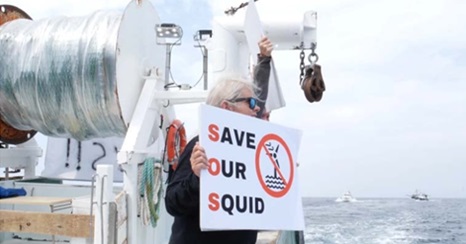 A flotilla of fishermen from across the East Coast gathered yesterday near the site of a damaged Vineyard Wind turbine to protest the perceived risks posed by offshore wind projects to the ocean and maritime communities. The protest, which also included a “Hands Across the Beach” demonstration on shore, highlighted growing concerns among fishermen about the impact of large-scale wind farms on their livelihoods and the environment. Vineyard Wind, which has been constructing towering turbine structures off the coast, has faced increasing criticism from local fishing communities. The concerns have escalated following a turbine blade failure in July that left fiberglass debris in the surrounding waters. more, >>CLICK TO READ<< 09:53
A flotilla of fishermen from across the East Coast gathered yesterday near the site of a damaged Vineyard Wind turbine to protest the perceived risks posed by offshore wind projects to the ocean and maritime communities. The protest, which also included a “Hands Across the Beach” demonstration on shore, highlighted growing concerns among fishermen about the impact of large-scale wind farms on their livelihoods and the environment. Vineyard Wind, which has been constructing towering turbine structures off the coast, has faced increasing criticism from local fishing communities. The concerns have escalated following a turbine blade failure in July that left fiberglass debris in the surrounding waters. more, >>CLICK TO READ<< 09:53
FFAW-Unifor Blames Federal Government for Shortened NL Cod Fishery Season
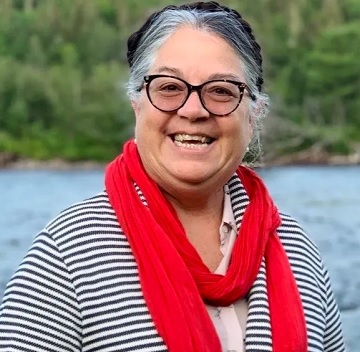 The Union that represents commercial fish harvesters in Newfoundland and Labrador is calling out the federal government for continued mismanagement of fisheries. This time, the criticism is again directed at the northern cod fishery in 3KL, which has been cut short after just a month of being open. With a closure taking place today, many harvesters found themselves with just a few days of fishing this season. “Federal MPs and Ministers like Diane Lebouthillier, Gudie Hutchings, and Seamus O’Regan are all responsible for the mass, premature layoff during what should be a booming season for our province,” says FFAW-Unifor President Greg Pretty. more, >>CLICK TO READ<< 08:12
The Union that represents commercial fish harvesters in Newfoundland and Labrador is calling out the federal government for continued mismanagement of fisheries. This time, the criticism is again directed at the northern cod fishery in 3KL, which has been cut short after just a month of being open. With a closure taking place today, many harvesters found themselves with just a few days of fishing this season. “Federal MPs and Ministers like Diane Lebouthillier, Gudie Hutchings, and Seamus O’Regan are all responsible for the mass, premature layoff during what should be a booming season for our province,” says FFAW-Unifor President Greg Pretty. more, >>CLICK TO READ<< 08:12
Fish and chips price rise tops UK takeaways
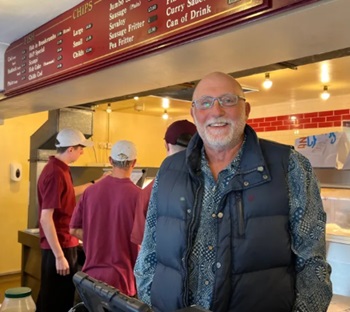 The average price for a portion of fish and chips rose more than 50% to nearly £10 in the five years to July – while the cost of a kebab went up 44% and pizza 30%. Chip shop owners cite a “perfect storm” of costs in recent years, including soaring energy bills, tariffs on seafood imports and extreme weather hammering potato harvests. This all means a family of four won’t get much change out of a £50 note once they’ve forked out for their tea and added some mushy peas and cans of pop. “I’ve never known an onslaught of pressures in terms of costs going up,” said Jon Long, of Long John’s Fish and Chips in Dorset. more, >>CLICK TO READ<< 07:08
The average price for a portion of fish and chips rose more than 50% to nearly £10 in the five years to July – while the cost of a kebab went up 44% and pizza 30%. Chip shop owners cite a “perfect storm” of costs in recent years, including soaring energy bills, tariffs on seafood imports and extreme weather hammering potato harvests. This all means a family of four won’t get much change out of a £50 note once they’ve forked out for their tea and added some mushy peas and cans of pop. “I’ve never known an onslaught of pressures in terms of costs going up,” said Jon Long, of Long John’s Fish and Chips in Dorset. more, >>CLICK TO READ<< 07:08

Building trawler’s digital twin
Seine netter/trawler F/V Naoned, operated by Lorient company APAK, has been out of the water to be outfitted with sensors to measure every conceivable aspect of its performance. This is to gather data ahead of a refit later this year and the installation of a new propulsion system, battery pack and other technology. The concept is to develop a digital twin for the fishing vessel, so that a precise comparison against its performance with the low-emissions hybrid propulsion to be fitted later this year as part of the HYBA project, led by the Brittany Fisheries Committee and managed by Vectura Systems with the involvement of naval architect Coprexma and a host of other companies in the region. Photos, more, >>CLICK TO READ<< 13:51
Gen Z fishing and farming communities form alliance
 Gen Z food producers in Cornwall have formed an alliance to encourage people to buy local. The young producers are encouraging people to support the fishing and farming industries by choosing Cornish-caught and grown food. Cornwall’s Young Farmers and the Young Fishermen Network said they had come together in August to host an event teaching people how to butcher and fillet produce. The Gen Z producers, born between 1997 and 2012, hoped the partnership would “foster a stronger connection between the two sectors”. more, >>CLICK TO READ<< 11:12
Gen Z food producers in Cornwall have formed an alliance to encourage people to buy local. The young producers are encouraging people to support the fishing and farming industries by choosing Cornish-caught and grown food. Cornwall’s Young Farmers and the Young Fishermen Network said they had come together in August to host an event teaching people how to butcher and fillet produce. The Gen Z producers, born between 1997 and 2012, hoped the partnership would “foster a stronger connection between the two sectors”. more, >>CLICK TO READ<< 11:12
The Snow Crab Collapse: A Tale of Unproven Assumptions and Overlooked Explanations
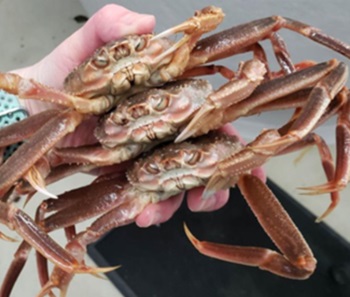 The sudden decline in the snow crab population in the Bering Sea has triggered considerable concern among scientists, fisheries, and environmentalists alike. The collapse is alarming not only because of its immediate economic impact but also due to the broader implications for marine ecosystems. However, a critical examination of the prevailing explanations for this phenomenon reveals a troubling reliance on speculation rather than solid evidence. The central thesis of the NOAA Fisheries report—that warmer water temperatures increased snow crab metabolism, leading to their downfall—requires a more skeptical analysis. In this post, we’ll explore the weaknesses of this hypothesis, examine other plausible causes, and argue for a more comprehensive approach to understanding this ecological mystery. more, >>CLICK TO READ<< 08:27
The sudden decline in the snow crab population in the Bering Sea has triggered considerable concern among scientists, fisheries, and environmentalists alike. The collapse is alarming not only because of its immediate economic impact but also due to the broader implications for marine ecosystems. However, a critical examination of the prevailing explanations for this phenomenon reveals a troubling reliance on speculation rather than solid evidence. The central thesis of the NOAA Fisheries report—that warmer water temperatures increased snow crab metabolism, leading to their downfall—requires a more skeptical analysis. In this post, we’ll explore the weaknesses of this hypothesis, examine other plausible causes, and argue for a more comprehensive approach to understanding this ecological mystery. more, >>CLICK TO READ<< 08:27
Shore Lawmakers Call for Hearings on High-Risk Power Cables for Offshore Wind Project
 Senator Jim Holzapfel, Assemblyman Greg McGuckin, and Assemblyman Paul Kanitra (R-10) have issued a call for legislative hearings concerning the proposal to lay high-risk power cables through densely populated residential streets in Ocean County. These cables would supply power to a potential offshore wind turbine project, a key component of Governor Phil Murphy’s energy master plan. The legislators expressed significant concern over the potential risks associated with the project, which they argue is being pushed through without sufficient consideration for its impact on local communities. “Governor Murphy continues forcing through his reckless energy master plan with no regard to our communities and no concern for the cost, all to get his name in the news for making New Jersey the California of the East Coast,” said the Legislative District 10 Delegation. more, >>CLICK TO READ<< 07:06
Senator Jim Holzapfel, Assemblyman Greg McGuckin, and Assemblyman Paul Kanitra (R-10) have issued a call for legislative hearings concerning the proposal to lay high-risk power cables through densely populated residential streets in Ocean County. These cables would supply power to a potential offshore wind turbine project, a key component of Governor Phil Murphy’s energy master plan. The legislators expressed significant concern over the potential risks associated with the project, which they argue is being pushed through without sufficient consideration for its impact on local communities. “Governor Murphy continues forcing through his reckless energy master plan with no regard to our communities and no concern for the cost, all to get his name in the news for making New Jersey the California of the East Coast,” said the Legislative District 10 Delegation. more, >>CLICK TO READ<< 07:06
Blue cod numbers declining in southern waters
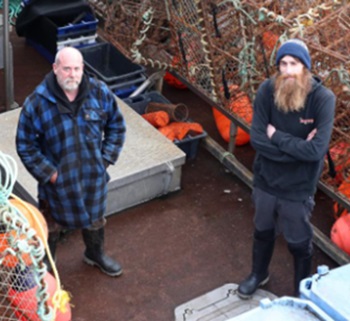 Declining numbers of blue cod in southern waters have prompted a review of catch limits for the 2024-25 year. A Fisheries New Zealand discussion paper says a survey of Foveaux Strait in 2023 concluded the abundance of blue cod in that area had declined by 57% since 2020 and the stock in Foveaux Strait was significantly overfished. “Catches of blue cod in [Southland and Sub-Antarctic area] have consistently declined for the last 20 years.” An average of 49 fishing vessels reported targeting blue cod annually over the last three years in the Southland and Sub-Antarctic waters. But poor catch rates had prompted the association representing those fishers and quota holders to ask for the fishery to be reviewed for the 2024-25 fishing year, starting October 1. more, >>CLICK TO READ<< 21:38
Declining numbers of blue cod in southern waters have prompted a review of catch limits for the 2024-25 year. A Fisheries New Zealand discussion paper says a survey of Foveaux Strait in 2023 concluded the abundance of blue cod in that area had declined by 57% since 2020 and the stock in Foveaux Strait was significantly overfished. “Catches of blue cod in [Southland and Sub-Antarctic area] have consistently declined for the last 20 years.” An average of 49 fishing vessels reported targeting blue cod annually over the last three years in the Southland and Sub-Antarctic waters. But poor catch rates had prompted the association representing those fishers and quota holders to ask for the fishery to be reviewed for the 2024-25 fishing year, starting October 1. more, >>CLICK TO READ<< 21:38
Review of prosecutions in chaotic elver fishery finds cases are being pursued
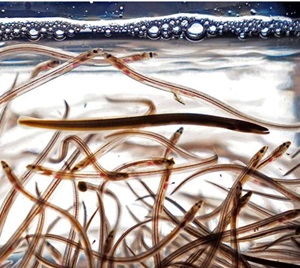 An internal review into whether federal Crown attorneys are refusing to prosecute infractions related to the turbulent baby eel fishery in the Maritimes has reportedly determined that proper discretion is being used and suggests at least two dozen cases have been brought to court. The examination was launched following a formal complaint by a commercial licence holder who alleged the Public Prosecution Service of Canada was failing to prosecute cases involving the unauthorized fishing of the juvenile eels, also known as elvers. In a recent email to the licence holder, David Antonyshyn, the deputy director of prosecutions, said an examination of 70 elver files referred by fisheries officers over a four-year period found about half proceeded to or were approved for prosecution. Others are still under review, while the remainder were declined. “There was not (and there is still not) any blanket policy not to prosecute particular individuals, or not to proceed with any particular type of offence,” Antonyshyn said in the email. more, >>CLICK TO READ<< 15:25
An internal review into whether federal Crown attorneys are refusing to prosecute infractions related to the turbulent baby eel fishery in the Maritimes has reportedly determined that proper discretion is being used and suggests at least two dozen cases have been brought to court. The examination was launched following a formal complaint by a commercial licence holder who alleged the Public Prosecution Service of Canada was failing to prosecute cases involving the unauthorized fishing of the juvenile eels, also known as elvers. In a recent email to the licence holder, David Antonyshyn, the deputy director of prosecutions, said an examination of 70 elver files referred by fisheries officers over a four-year period found about half proceeded to or were approved for prosecution. Others are still under review, while the remainder were declined. “There was not (and there is still not) any blanket policy not to prosecute particular individuals, or not to proceed with any particular type of offence,” Antonyshyn said in the email. more, >>CLICK TO READ<< 15:25
Viking Traps score on board F/V Northwestern
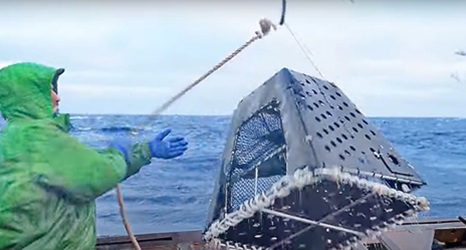 The Viking Traps made by Norwegian company Proffteiner have been a success with Deadliest Catch skipper Sig Hansen, who has been trying them out on board Bering Sea crabber F/V Northwestern. The episode is aired on the Discovery Channel this month. The standard crab traps are roughly two metres square and a metre high, and weight around 300kg. These are lifted on board singly, and there’s no handling these traps by hand. But before starting fishing, it’s Sig Hansen’s first job to find where the crabs are, and that’s where the Viking Traps have scored. Photos, more, >>CLICK TO READ<< 12:30
The Viking Traps made by Norwegian company Proffteiner have been a success with Deadliest Catch skipper Sig Hansen, who has been trying them out on board Bering Sea crabber F/V Northwestern. The episode is aired on the Discovery Channel this month. The standard crab traps are roughly two metres square and a metre high, and weight around 300kg. These are lifted on board singly, and there’s no handling these traps by hand. But before starting fishing, it’s Sig Hansen’s first job to find where the crabs are, and that’s where the Viking Traps have scored. Photos, more, >>CLICK TO READ<< 12:30
“We’re not getting the full value out of it”: The future of local seafood in Louisiana
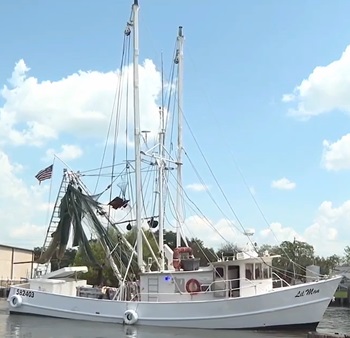 “Industries change over time, like anywhere you are, and so we’re just adapting to the new realities of the seafood supply chain.” LSU’s Seafood Processing Demonstration Lab is a hub for research and innovation. “Our main focus is in underutilized species and byproduct recovery,” said. As the only facility of its kind in-state, this Louisiana Sea Grant-sponsored program works with local processors, restaurateurs, and fishermen, to build local connections. “Louisiana is the #2 seafood state in the nation,” said co-director Thomas Hymel, “but a lot of our product is uh–we’re not getting the full value out of it.” Video, more, >>CLICK TO READ<< 10:10
“Industries change over time, like anywhere you are, and so we’re just adapting to the new realities of the seafood supply chain.” LSU’s Seafood Processing Demonstration Lab is a hub for research and innovation. “Our main focus is in underutilized species and byproduct recovery,” said. As the only facility of its kind in-state, this Louisiana Sea Grant-sponsored program works with local processors, restaurateurs, and fishermen, to build local connections. “Louisiana is the #2 seafood state in the nation,” said co-director Thomas Hymel, “but a lot of our product is uh–we’re not getting the full value out of it.” Video, more, >>CLICK TO READ<< 10:10






